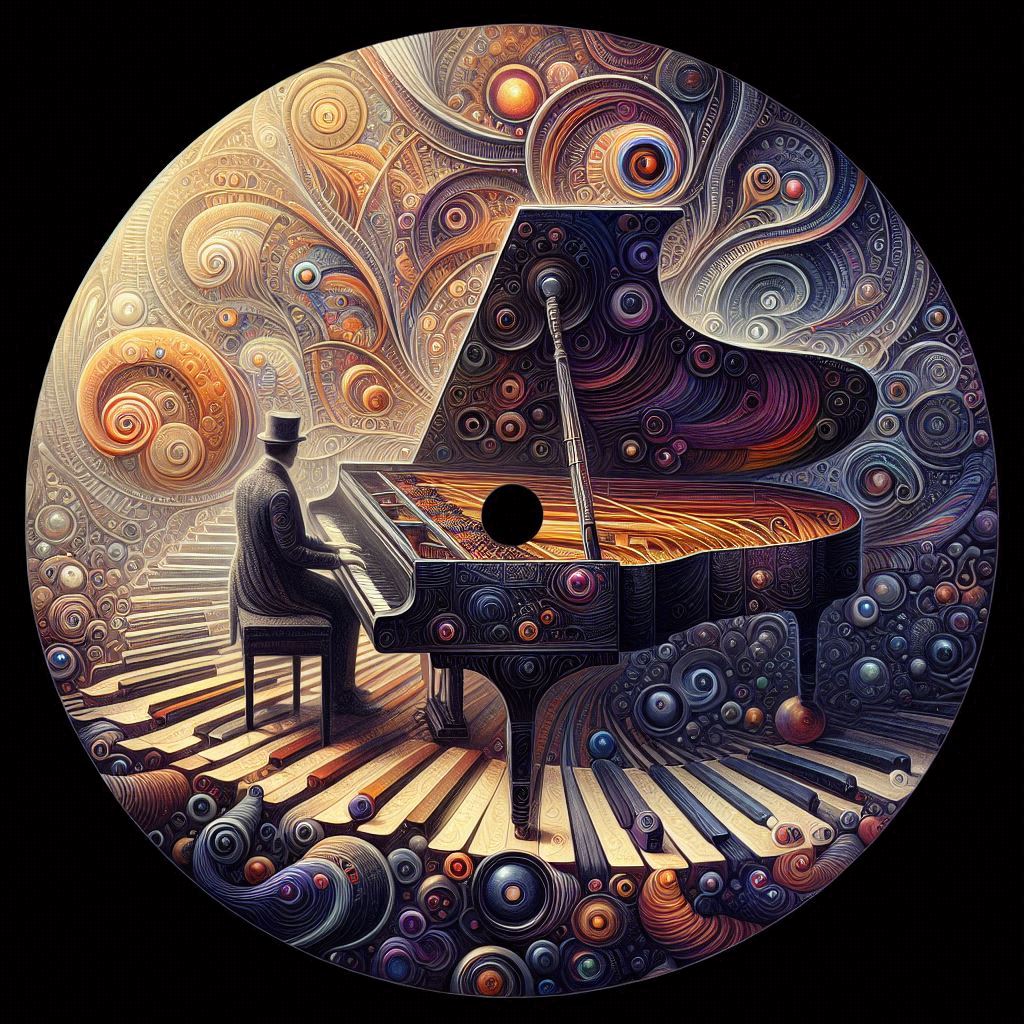
Howard Channels Ludwig van Beethoven
In this album, I present my interpretation of two popular works by Ludwig van Beethoven. They are:
- Quasi una Fantasia, aka Moonlight Sonata
- Pathétique
For each movement I crafted a “piano” that I think brings out what I feel when I listen to that piece. These are layered sounds and crafted reverb, echos and effects that are built specifically for each movement. The pianos are built from many sampled acoustic and electric pianos along with electronic synthesizer patches that I created. In some cases, a synthesizer note only appears at a specific velocity of key-strike on the piano in a specific region. These are one-of-a-kind pianos that I like to call my “Impossible Pianos” because they cannot exist in real life.
I also used various effects and edits to achieve the crafted sound that I desired like distant canyon echoes, dense hall reverberation and other flights of my imagination. Let the music take you on a journey and I hope you enjoy my work and your excursion.
Quasi una Fantasia
This is known as Piano Sonata No. 14 in C# minor. It was marked as quasi una fantasia, Op 27, No. 2. It was completed in 1801 and was dedicated in 1802 to Beethoven’s pupil Countess Julie “Giulietta” Guicciardi. It is one of Beethoven’s most famous works and was completed when he was 30 years old. The nickname Moonlight Sonata arose after the German music critic and poet Ludwig Rellstab likened the effect of the first movement to that of moonlight shining upon Lake Lucerne.
The sonata breaks with normal form in that it is represented as a slow movement, a little faster movement and then a very fast movement. Traditionally a sonata would be fast movement, slow movement, and finally an ending fast movement.
The sonata consists of three movements:
- This first movement is played at Adagio sostenuto which translate to slow and sustained and is in the key of C# Minor. I used three piano samples for this, electric, 5 meter grand and Distant Mountain Grand to get the space into the music. There is also a synthesizer “stringish” patch which is layered into the piano and only strikes if certain conditions are met, (velocity of keypress and aftertouch). The synth sound is a reworking of a super saw patch with some interesting chorus and reverb.
- The second movement is played allegretto which translates as a little quickly. This movement is in the key of Bb Minor. I again used three piano samples and the Reason reverb to give a sense of space. The SuperSaw is barely heard, more of an affect than an effect.
- The final movement is again in C# Minor and is presented as Presto Agitato which is “fast, agitated.” This was a real pain in the rear end to perform as I cannot play this piece from beginning to end anymore, just too old. I edited the notes I put in many times in the program Musescore to get it “correct”. I also edited velocities of string and added aftertouch to certain notes to bring out subtleties in the song. Again, the SuperSaw is present but only heard in a few places under certain conditions. Liberal use of echo and reverb are employed to make “space” for the piece.
Pathétique
Piano Sonata No. 8 in C minor, Op. 13, commonly known as Sonata Pathétique, was written in 1798 when the composer was just 27 years old and was published in 1799.
This is Ludwig at his finest. It consists of three movements.
- The first movement is known as Grave – Allegro di molto e con brio which translates to Serious – Very Cheerful and with Verve. It starts in the home key of C minor in 2/2 time and features three themes. The piece makes use of Mannheim crescendos in the beginning and also swiftly ascending melodic lines known as “rocket themes”. Also, it features 128th notes, which are a bear to read but awesome! I used 6 audio tracks of instruments to get the sound for the work including distant grand, Fender Rhodes, a 5-meter grand piano and the SuperSaw. I tweaked note velocities and aftertouch to bring out certain portions of the piece.
- The second movement is performed as Adagio cantabile (Slowly, in a singing style). It opens with a famous cantabile melody. This theme is played three times, always in A-flat major, separated by two modulating episodes, making it a five-part rondo. I did an 8 channel stereo mix using Grand Piano, 5 Meter Grand, Distant Grand, Echo Grand Piano, Fender Rhodes Piano, and several synthesized choral and string patches mixed together to get “the sound”.
- The third movement is performed as a Rondo: Allegro (Quickly). The main theme closely resembles the second theme of the Allegro of the first movement: its melodic pattern is identical for its first four notes, and its rhythmic pattern for the first eight. This is a 9 Chanel stereo mix of a Fender Rhodes, 5 meter grand, synthesizers and several echo and reverb machinations. Again, making a space for the piece to live in was my goal.
And here it is, my album.
